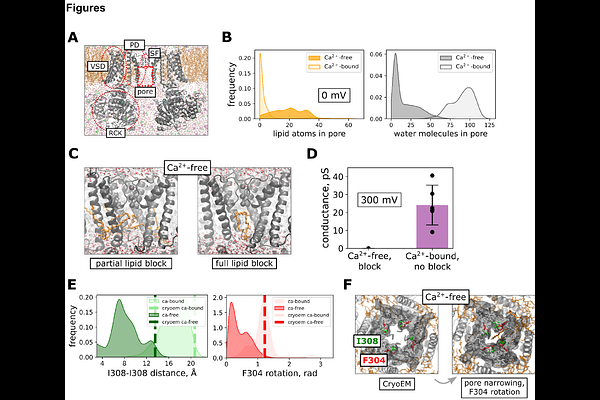Lipid gating of BK channels and mechanism of activation by negatively charged lipids

Lipid gating of BK channels and mechanism of activation by negatively charged lipids
Mironenko, A.; de Groot, B. L.; Kopec, W.
AbstractBK channels are a class of K+ channels that possess an unusually high conductance and are synergistically gated by intracellular Ca2+ and voltage. Despite the significant array of experimental and computational data, many aspects of their function and dynamics remain unclear - such as how ion permeation is halted in the closed state of the channel. Available CryoEM structures obtained in deactivating conditions capture the channel with a wide, unobstructed pore, in contrast to e.g. a helix bundle crossing observed in some K+ channels. Several hypotheses of BK closure were proposed, including selectivity filter and hydrophobic gating. In this work, we expand on the model of hydrophobic gating and focus on the role of lipids. Based on our atomistic and coarse-grained molecular dynamics simulations, we propose lipid entrance into the pore - either with lipid tails or entire lipid molecules - through the membrane-facing fenestrations to be a critical determinant of BK conductivity. Furthermore, we elucidate the mechanism of BK activation by negatively charged lipids, and suggest that they act by a multi-modal mechanism, which encompasses lipid entry reduction, increase of the K+ occupancy of the pore, and stabilization of the channel open-state structure - in broad agreement with experimental data. This presents an example of the crucial role of lipids in regulating BK channel activity, and paves the way to further understanding of BK function in such complex environments as cellular membranes.